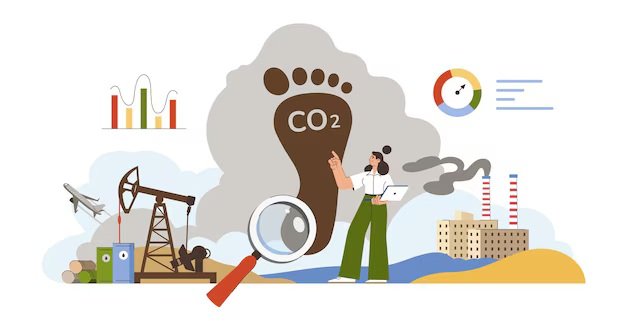How a Nat Geo Shoot Helped Scientists Find a New Giant Anaconda
A team filming a high-profile Nat Geo series led to a scientific surprise: researchers working alongside a documentary crew that included Will Smith helped document a distinct—and astonishingly large—anaconda deep in the Ecuadorian Amazon. What began as a search for local stories and ecosystems turned into the identification of a northern green anaconda that scientists now treat as a species distinct from the southern green anaconda. According to Reuters, the discovery was published and discussed by the research team in 2024, and it prompted both excitement and urgent conservation questions.
The field moment that made headlines was not a staged television stunt but a real scientific encounter. Members of the University of Queensland team, led by herpetologist Professor Bryan Fry, were invited by Waorani community members to investigate reports of extraordinarily large snakes. The researchers captured tissue and blood samples and measured specimens; one female anaconda was reported at around 6.3 meters (about 20.7 feet). According to the University of Queensland, the team collected these samples while assisting production of the National Geographic series “Pole to Pole with Will Smith.”

How Researchers Proved They’d Found Something New
Proving that a population represents a distinct species takes DNA, careful measurements, and peer review—steps the team completed and published in the open-access journal Diversity. The formal paper describes the new northern green anaconda (Eunectes akayima) and shows that what had long been considered one widespread species is actually two genetically distinct lineages that split roughly ten million years ago. A 2024 Study in Diversity provided the genetic data and morphological context needed to justify naming the northern form as a separate species. According to the study, the genetic divergence and consistent anatomical markers make the northern green anaconda a valid, newly described species.
The snakes look very similar to the eye, but their DNA and body measurements tell a different evolutionary story. Professor Bryan Fry, whose team led sample collection, called the discovery a career highlight and emphasised that local Waorani knowledge was vital to finding these animals in a remote corner of the Amazon. That combination—traditional ecological knowledge plus targeted field genetics—was what turned rumour into scientific record. According to the University of Queensland reporting, Fry said the team received a “rare invitation” from the Waorani to study animals rumoured to be the largest anacondas.
What the Discovery Actually Means for Science, People and Policy
Beyond the headline-grabbing size estimates, the find reconfigures how biologists count and conserve biodiversity in the Amazon. If a widely recognised species actually hides several distinct, narrowly distributed species, conservation priorities change: narrow-range species are typically more vulnerable to habitat loss, pollution and over-harvest than widespread relatives.
The newly described northern green anaconda has staggering reported size potential—some outlets and the authors cite specimens and field reports suggesting individuals could reach up to 7.5 meters and weigh several hundred kilograms. That scale would place them among the largest snakes on Earth. According to ExplorersWeb and other reports citing the research, the largest estimates reach about 7.5 meters and up to roughly 500 kilograms, though those extreme numbers are contextual estimates rather than common averages.
The team’s work also flagged immediate environmental threats. Reuters reported that researchers used anacondas and large fish as biological indicators to assess contamination from oil activity, finding that these top-level animals can accumulate petrochemical metals from polluted waterways. That raises local health concerns as well because river communities rely on fish and river food chains. The study recorded elevated petrochemical markers in animals sampled near oil-impacted regions.
The human side of the story is important. The Waorani people who guided and partnered with scientists were not merely hosts; they were co-authors and co-investigators in the research. That cooperation reflects a growing best practice in tropical biology: research works best when it recognises and funds indigenous knowledge systems rather than treating them as background colour. University of Queensland reporting and EurekAlert material credit Waorani collaborators for access, guidance and ecological insights that made the discovery possible.
Lessons and Next Steps: What Scientists and the Public Should Do Now
Discovery brings responsibility. The research community has already outlined follow-up actions: more systematic surveys, careful population monitoring, and genetic sampling across broad geographic ranges to understand the northern anaconda’s distribution and true size variation. The MDPI paper itself raises open questions about life history, population numbers, and how various human activities—such as oil development, deforestation, and hunting—impact these large snakes. According to the paper’s lead author, the description of Eunectes akayima is a first step, not the finish line.
Local health and conservation policy must also respond. Reuters detailed early findings that top predators in contaminated waterways can carry petrochemical signatures—a warning sign when human diets include those same species. Communities that consume river fish and other aquatic wildlife may face subtle, long-term risks from the bioaccumulation of pollutants; scientists urge monitoring and stronger environmental safeguards where extractive industries operate.
What follows in the field will be painstaking: researchers must avoid sensationalising every big snake sighting while still recording, measuring and protecting these animals. Scientists working with the film crew have emphasised measured language: “largest” is an exceptional descriptor that needs rigorous backing; one-off eyewitness reports or viral videos aren’t proof. As National Geographic and university partners have said, the combination of careful sampling, lab genetics and local knowledge is the responsible path forward.

Why it Mattered: Researchers Reflect on the Discovery
Professor Bryan Fry (University of Queensland) described the expedition as the product of rare cooperation and said the find was a highlight of his career. According to the UQ release, he noted the importance of Waorani collaboration in locating these animals deep in remote river networks.
Dutch biologist Freek Vonk—also among the authors on the MDPI team—has publicly shared footage and context that helped bring wider attention to the discovery. National Geographic coverage and researchers on the study pointed to this kind of cross-disciplinary teamwork—TV crews, academic labs and indigenous partners—as increasingly valuable for modern field biology. According to the MDPI article and press coverage, Vonk and colleagues contributed field observations alongside genetic analysis.
Actionable Advice for Readers and Policymakers
Protecting a newly described giant is not about celebrity headlines—it needs concrete policy and local support:
- Fund local-led surveys. Scientific teams should prioritise training and funding for local communities (especially indigenous groups) to monitor populations and habitat health. Collaborative monitoring is faster, more culturally appropriate and cost-effective than outsider-only models. Studies and press releases from the University of Queensland highlight Waorani involvement as essential.
- Strengthen pollution safeguards. Where extractive industries operate near rivers, policymakers must require independent monitoring of waterways and wildlife, and enforce remediation when contamination is detected. The Reuters findings that anacondas and large fish hold petrochemical metals argue for immediate environmental oversight.
- Support open science and careful communication. Research teams and media should avoid hyperbole; instead, present clear evidence, reproducible data and transparent caveats. The MDPI paper is a model—open-access data and peer-reviewed methodology make the discovery robust and verifiable.
- Back indigenous rights and knowledge. Conservation succeeds when local people control access to their territories and receive tangible benefits from research and sustainable stewardship. The Waorani collaboration shows how knowledge-sharing can lead to important new science.
Conclusion
The discovery of a northern green anaconda while filming a major documentary—reported by established outlets and published in peer-reviewed journals—reminds us that some corners of Earth still yield scientific surprises. But each discovery is also a warning: large, slow-breeding animals are especially vulnerable to habitat change and contamination. If the global community wants these giants to persist, discovery must be followed by monitoring, policy and funding—not just headlines.







